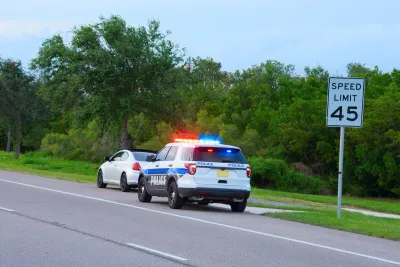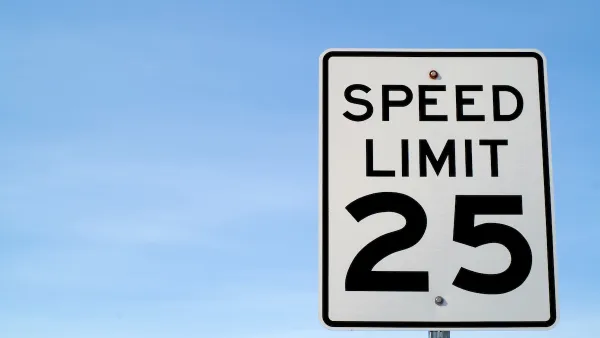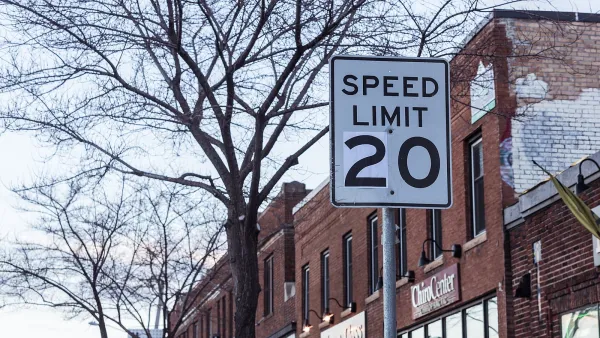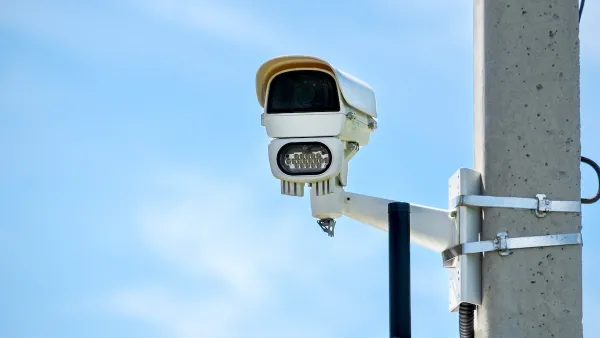Drivers sometimes defend speeding by arguing that it is safe as long as other drivers are also speeding. This argument only makes sense in the context of a limited-access highway.

As street safety advocates have repeatedly pointed out, speed kills: in particular, a pedestrian struck by a car going 40 miles per hour is far more likely to die than one struck by a car going 20 miles per hour.
But I’m not sure how many motorists realize this. A common perspective was once stated by a relative of mine: “Speeding isn’t dangerous. What’s dangerous is when one person is going more slowly than everyone else.” For example, when other drivers are going 60 miles per hour, and one person is going only 30 miles per hour, the fast drivers might be more likely to rear-end the slow driver, because they are expecting the slow driver to go at their speed. Thus, fatalities are least likely when everyone is driving 60 miles per hour.
This argument might make sense in the context of a limited-access highway. On such a highway, it is reasonable for a driver to expect all road users to be traveling at roughly the speed limit (or maybe even a little faster). Moreover, a lower speed limit might have fairly modest safety benefits, because even a motorist struck by someone going slowly by highway standards (that is, 40 or 50 miles per hour) is still reasonably likely to die or be seriously injured.
By contrast, other types of streets are full of slow-moving, vulnerable road users: not just pedestrians and cyclists, but also cars that are slowly turning into a store or intersection, or cars stopped waiting for a light to change or waiting to yield to oncoming traffic. In such a situation, it is not practical to expect everyone to go the same speed, and a reasonable driver would be aware of this fact. It logically follows that on regular streets full of walkers and stopped cars, speed kills: that is, a street where drivers go 40 miles per hour is likely to be the site of far more death and injury than a street with slower traffic.

National Parks Layoffs Will Cause Communities to Lose Billions
Thousands of essential park workers were laid off this week, just before the busy spring break season.

Retro-silient?: America’s First “Eco-burb,” The Woodlands Turns 50
A master-planned community north of Houston offers lessons on green infrastructure and resilient design, but falls short of its founder’s lofty affordability and walkability goals.

Delivering for America Plan Will Downgrade Mail Service in at Least 49.5 Percent of Zip Codes
Republican and Democrat lawmakers criticize the plan for its disproportionate negative impact on rural communities.

Test News Post 1
This is a summary

Test News Headline 46
Test for the image on the front page.

Balancing Bombs and Butterflies: How the National Guard Protects a Rare Species
The National Guard at Fort Indiantown Gap uses GIS technology and land management strategies to balance military training with conservation efforts, ensuring the survival of the rare eastern regal fritillary butterfly.
Urban Design for Planners 1: Software Tools
This six-course series explores essential urban design concepts using open source software and equips planners with the tools they need to participate fully in the urban design process.
Planning for Universal Design
Learn the tools for implementing Universal Design in planning regulations.
EMC Planning Group, Inc.
Planetizen
Planetizen
Mpact (formerly Rail~Volution)
Great Falls Development Authority, Inc.
HUDs Office of Policy Development and Research
NYU Wagner Graduate School of Public Service






























